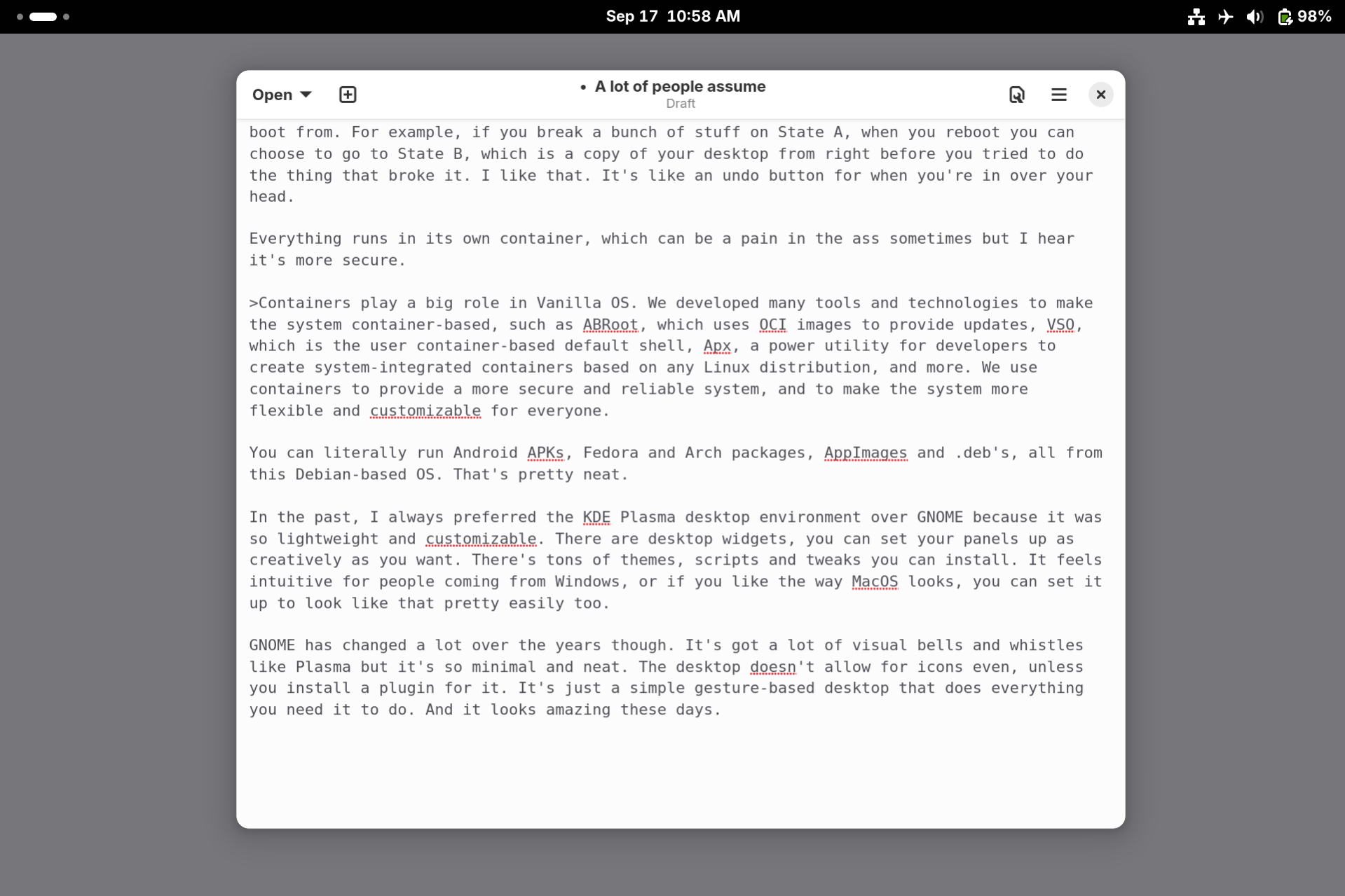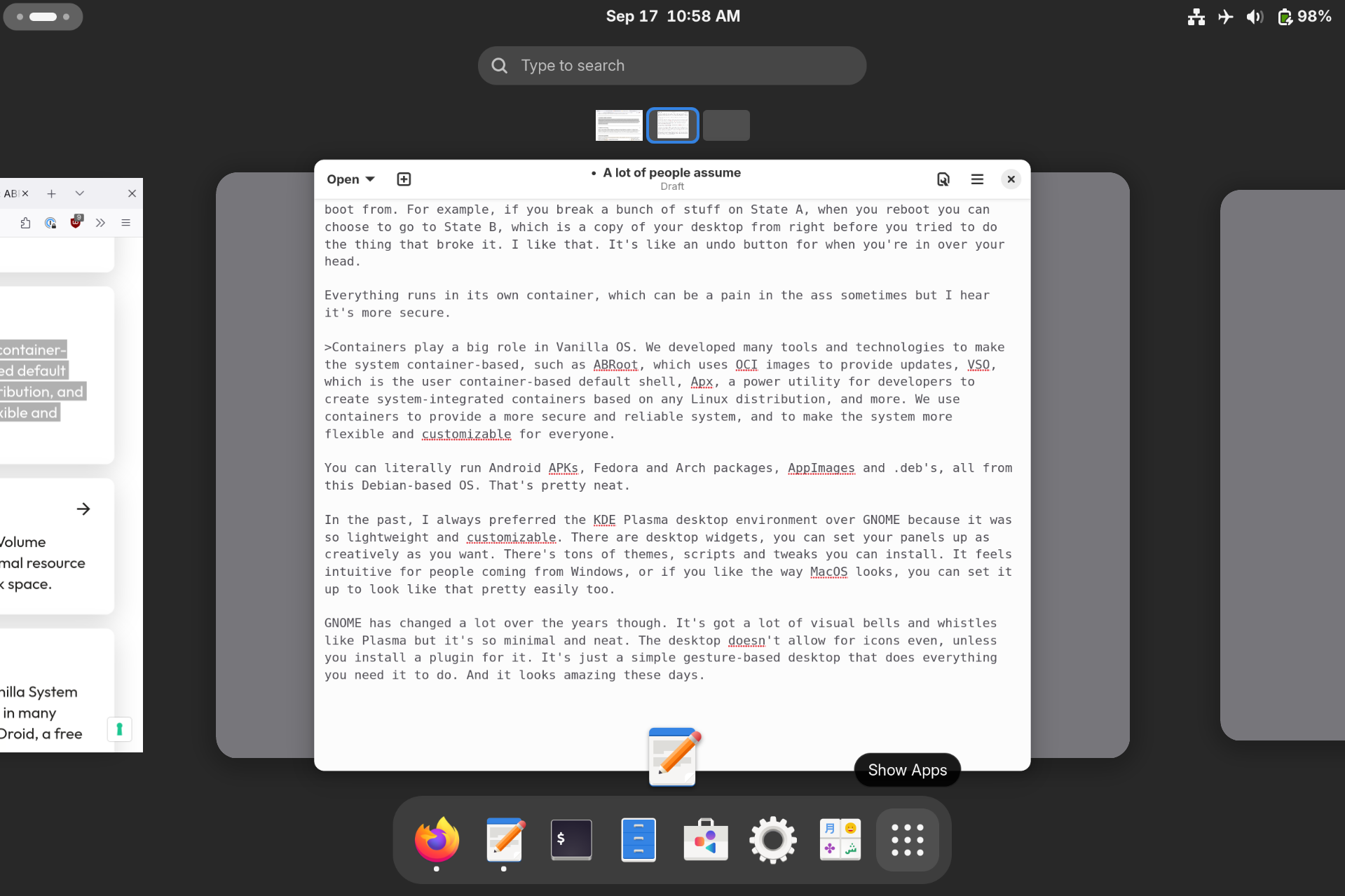My experience on Vanilla OS so far
A lot of people assume Linux users are all hackers or at least have some background in programming. I do not. I’m part of the other demographic - the people who grew up poor and started using it to revive obsolete hardware.
I know enough shell scripting and other terminal stuff to (usually) get by if I break something, but I’m too dumb to use a distro like NixOS. I actually prefer using the commandline to add and remove programs and do little system maintenance things but I’ve never built my own version of Linux or even compiled anything.
Linux isn’t really that complicated anymore, luckily. I recently switched to Vanilla OS after about a three year run on KDE Neon. I hear Vanilla is a pretty big deal for being immutable.
Vanilla OS is an immutable operating system, which means that the main system components are read-only and cannot be modified. This allows us to keep the system reliable and always in a working state.
From what I understand, there are two states, or two different instances of the OS you can boot from. For example, if you break a bunch of stuff on State A, when you reboot you can choose to go to State B, which is a copy of your desktop from right before you tried to do the thing that broke it. I like that. It’s like an undo button for when you’re in over your head.
Everything runs in its own container, which can be a pain in the ass sometimes but sources are telling me it’s more secure.
Containers play a big role in Vanilla OS. We developed many tools and technologies to make the system container-based, such as ABRoot, which uses OCI images to provide updates, VSO, which is the user container-based default shell, Apx, a power utility for developers to create system-integrated containers based on any Linux distribution, and more. We use containers to provide a more secure and reliable system, and to make the system more flexible and customizable for everyone.
You can literally run Android APKs, Fedora and Arch packages, AppImages and .deb’s, all from this Debian-based OS. That’s pretty neat.
In the past, I always preferred the KDE Plasma desktop environment over GNOME because it was so lightweight and customizable. There are desktop widgets, you can set your panels up as creatively as you want. There’s tons of themes, scripts and tweaks you can install. It feels intuitive for people coming from Windows, or if you like the way MacOS feels, you can set it up to look like that pretty easily too.
GNOME has changed a lot over the years though. It’s got a lot of visual bells and whistles like Plasma but it’s also incredibly minimal and neat. The desktop doesn’t allow for icons even, unless you install a plugin for it. It’s just a simple gesture-based desktop that does everything you need it to do. And it looks amazing these days.


Above all else, on Vanilla OS at least, GNOME feels insanely lightweight and responsive. My main device is a three year old Surface Go 2 and I haven’t had any slowdowns or glitches whatsoever since switching. Even simple things like watching a YouTube video in full HD would slow down KDE Neon. I couldn’t use the popout video player on Firefox either because it was just too much for Neon to handle. I’ve had zero problems with that so far on Vanilla.
I’m not an expert or power user by any means but I’ve had a great experience on this OS for the past week. For something free and open source, it really feels like a commercial OS, minus all the bloat and spyware. I think I’ll be here for the foreseeable future. I keep catching myself opening my laptop just to scroll through different screens and menus, which is really saying something because I just updated to iOS 18 and I haven’t been able to put my phone down lately either. They feel complimentary, honestly. Vanilla OS with GNOME feels on par with the quality you’d expect from Apple if Apple was an open source organization instead of an insanely profitable, commercial tech giant.